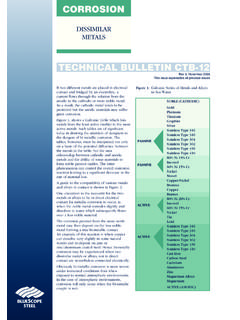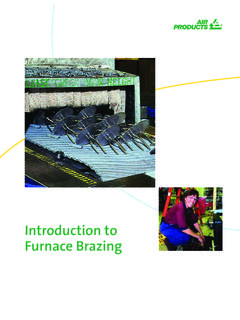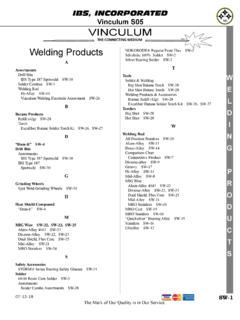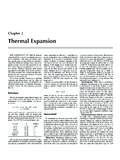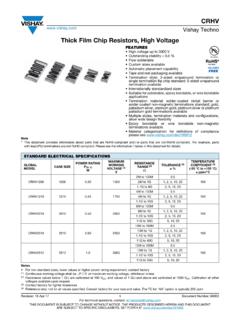Transcription of More Marks and History of James Dixons & Sons taken …
1 More Marks and History of James Dixons & Sons taken from "Made in Sheffield - The Story of James dixon & Sons - Silversmiths - by Pauline Cooper Bell" ISBN 1-901587-52-5 first published September 2004 This article is intended as a brief summary of the History of James dixon & Sons giving extra information and showing other Marks used by Dixons additional to what was already published previously on this website. About the author of the book from which this information has been sourced - Pauline Cooper Bell descends from several generations who worked for James dixon & Sons. In this book she wanted to look at the interwoven History of her own family and of James Dixons , and of the myths, legends, historical fact, traditions, and experiences that told their story. This is a most interesting read and highly recommended to all those with an interest in such matters.
2 Copies of the book can be obtained by contacting Pauline directly by email to - pbell7(at) further information is available from Pauline by going to the website - and by paying 2 the reader can download a PDF entitled 'A Rare and Special Collection'. This is a 120 page document mostly concerning James dixon & Sons over the years but also some of the successors to the business after closure. It is a proud and informative document concerning one of Sheffield's most important employers over many years. For this website the interest is in the History , Marks , and Products of Dixons . As pewter collectors we know of them as being perhaps the driving force in the manufacture and marketing of Britannia Metal. There was far more to them than that as Pauline's book makes clear. So it was a little shock for this writer to see the book headed - James dixon & Sons - Silversmiths!
3 For simplicity this article will try to look at events starting with - 1) - detail of some of the materials, processes and jobs, 2) - then by way of the years appropriate to the events and History , 3) - and finally with reference to the information known about the Marks as expressed in this History (and additional to other articles on this website.) Some detail may overlap with the previous website article. 1) - Some Materials , and quality products Britannia Metal - founding basis of business - said to be 95% tin 4% Antimony 1% Copper - the tin is melted to a red heat in a cast iron trough, into the liquid is poured a melted regulus of antimony ,copper and brass - stirred by a workman. Then poured into iron boxes making slabs or ingots - commonly styled as white metal. Necessary to inscribe as Britannia metal to avoid confusion with Silver.
4 Can then be rolled into sheets. (Description from Dixons ) EPNS - Electroplated Nickel Silver - is a technique by which Silver is deposited on a base metal using an electric current. The process was patented in 1840 and is still used today. Silver is deposited on the base metal (often an alloy based on copper, nickel and zinc - though other alloys can be electroplated and other metals can be coated). The aim was to produce good quality products halfway from Britannia metal to Silver. Christopher Dresser whilst famous for design was cost conscious in trying to see his designs could be enjoyed by as many people as possible - and he very much approved the use of EPNS. Fused Plate or Sheffield Plate - Plating by fusion not electricity. Thomas Bolsover in 1743 overheated a knife handle and the silver and copper fused together.
5 Further experimenting showed copper and silver fused by heat could be rolled to a desired size and thickness keeping the same proportions. The fused sheet could then be modelled into a product. Saying - "T'copper were as thick as t'missus cuts t'bread and t'silver as thin as she spreads t'butter" Sterling Silver Products - must be pure silver - hallmarked to show difference and denote quality. Dixons used it for prestigious items - trophies, celebratory trowels, christening presents, church communion sets. Low carbon Steels - Stainless steel - if containing only 12% chromium they resisted corrosion. Discovery in 1913 and found to be good for gun barrels, good for cutlery, W H Hatfield developed staybrite brand (18% chromium 8% nickel) Dixons were involved with this steel from the 1920s Xylonite, Vulcanite and Ebonite (celluloid products) were used from the 1880s fire was always a risk using these materials and it appears they were bought in.
6 Mother of Pearl was used for the handles of serving implements. Horn meat knives and carvers had distinctive rough looking handles made of horn. Ivory was used for example on fish knife handles but had been used for centuries. Hafting in later years the handle was usually made of similar material to the blade. A full length tang (the handle interior continuation of the blade shaped as a shaft) signified a better product. Quality Products Dixons were known for designing and making exclusive products. These were used for Sheffield Dignitaries, Royalty, famous people, and wealthy people who wanted something unusual and valuable. Charles Holiday a worker for life at Dixons was a known great designer. He designed for example a special silver tea pot set for the British Industries fair at Wembley in 1951 the Queen (wife of George VI) liked it so much that she bought one.
7 Harrods commissioned a centrepiece for the silver jubilee in 1977. In 1973 Harrods commissioned 90, 000 of rosewater bowl and ewer sets in solid silver to sell at 450 the pair. Some unique pieces were made for Sheffield Cathedral. Gold pieces were supplied to Cutler s Hall. Charles Halliday designed The Freedom Casket for the Emperor of Japan and for the Presidents of France Rumania Canada and other royalty. The Blue Riband trophy for the fastest sea crossing of the Atlantic when first issued as a trophy (previously a simple blue pennant) was designed at Dixons by Charles Halliday in 1932-1933, it weighed 602 ounces of silver, and the Americans valued it at 750,000. He designed in the late 1950s the trophy for the American Master s Tournament held in Augusta, Georgia, USA (625 ounces of silver and took four months to make Dixons also made 6 silver replicas of it and the original gold medal presented with it.)
8 The Eisenhower Trophy of 1958 was also a Dixons product. Christopher Dresser 1880s 2004 acted as a sole arbiter of taste to the Art Furnishers Alliance as its Artistic Director. His designs in metal ware were made by Dixons . In 1994 a Dresser silver teapot sold at auction for 69,000 (it had cost to make in 1879). William Moorcroft pottery was topped by EPNS silver bands and sometimes had metal lids many of these metal parts were made by Dixons . 2) - A few processes and jobs STAMPING Sheets of metal were taken to the stamp shop to begin the process of production. Pieces were stamped out carefully to avoid waste of material or time. The shape was formed by alternate stamping and annealing in a gas fired furnace. The stamp machine might be one ton in weight and capable of producing 100 tons of pressure.
9 Stamp beds were on the ground floor set into pits filled with material to absorb vibration. The sound of the machine told the workers if the process was successful so no ear protection. SPINNING The sheet is attached to a wooden former and rotated and worked until it takes on the required shape. The formers are made of dense strong woods and were valuable. Engraving or Chasing would be worked after this stage. SILVERSMITHS (pewter workers also?) Then take the pieces (stamped or formed) and assemble them by soldering. It is said that silver shards found in trouser turn ups when the worker went home at night had to be returned to the factory next day. BURNISHING (before and after 1851) - the final process in the production of Silverware was mostly done by women. A process to give a product its highly polished finish and conceal any impurities.
10 The piece was cleaned and covered with soft soap, sand and water mixed were rubbed in to remove and grease and dirt. To remove blemishes an agate burnisher was moved back and forth over the metal by hand. A steel burnisher closed the pores of the silver. The gleaming finish was produced by the use of bloodstone and wet rouge and then polished with a soft old linen cloth. In 1905 it took a day to burnish a tea pot. Burnished products in 1868 included Cake or Sugar baskets, beakers, Bottle stands, tea and coffee sets, wine strainers etc. FINISHERS Whereas Burnishing by hand was women's work, the use of machinery was men's work! Rotating spindles with different dollies or buffs of different material gave the product its gleam after plating. Before plating harder dollies were used to clean the piece. BUFFING - This was the name for the preplating cleaning, it was dirty work (using pumice and oil).

